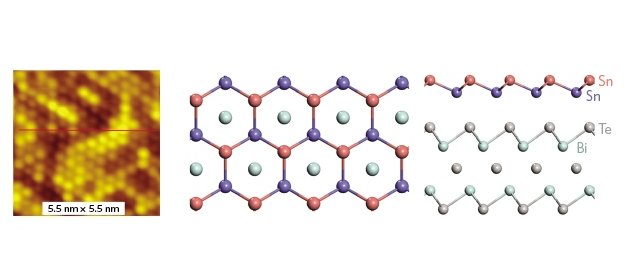By now, we are all well acquainted with graphene – one of the greatest discoveries of the 21st century. Discovered at the University of Manchester in 2004, this super two-dimensional material is 200 times stronger than steel and it can conduct heat and electricity with ease.

Since graphene surpassed all expectations, scientists were curious to find out whether other 2D meshes could be made from other elements.
Now, a team of researchers from Stanford University in the US and institutions based in China claim to have made a sample of stanene – a honeycomb 2D arrangement of tin (Sn) atoms, with a bismuth telluride support that buckles the whole structure.
For quite some time now, scientists have speculated that stanene can transfer electricity without heat loss, implying amazing energy savings and increased performance for semiconductor applications.
As a two-dimensional structure, stanene allows electrons to travel along the edges of the mesh in a single path, without bumping into each other, which in turn eliminates vibrations and heat loss. According to the scientists, 2D stanene is better than graphene because electrons no longer travel through the centre of its honeycomb structure, but rather on the edges allowing the electrons to preserve the same speed at all times.
The researchers vaporised a bit of tin inside of a vacuum chamber in order to make their sample. This procedure allowed for the formation of the characteristic mesh on a bismuth telluride surface.
The created sample is too small,so the team was able to see only the top ridges of the structure with a scanning tunnelling microscope and since they believe that the substrate interacted with the mesh, conductivity testing could not be performed.
Many claim that more research and more experiments are needed to confirm that stanene has truly been created. That is why the researchers will carry out deeper measurements on the crystal arrangements within the material, but state that the honeycombed surface of the material is a strong indicator of 2D stanene.



















